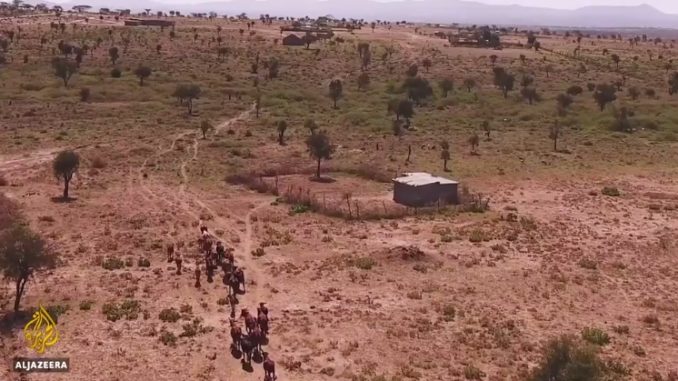
We travel to southern Kenya and Myanmar to see how locals are coping with extreme weather conditions.
Rising global temperatures have been linked to changing weather patterns. Drought, storms, wildfires – extreme weather have recently become the norm and conditions will only worsen unless things change.
earthrise travels to southern Kenya and to Myanmar to see how the locals in these areas are coping with extreme weather.
Navigating drought in Kenya
In drought-stricken Kenya life for all residents, and particularly the herding community, has been nothing less than devastating. Erratic weather patterns and the increasing effects of climate change have led to a lack of vegetation and water resources jeopardising the survival of livestock and the pastoralist way of life.
 |
| Maasai herders in southern Kenya have to migrate to greener pastures to ensure their cattle are fed in the midst of a water resource crisis. [Maria Jan/Al Jazeera] |
“Last drought, when I migrated near Tanzania, I lost roughly 15 beasts. It’s a big impact, I felt it, it was really bad. When it comes to us, I cannot control it. I have to bear,” says Joshua Ntaserua, a Maasai herder who has experienced the changes in weather patterns first-hand.
However, as the onslaught of unpredictable weather continues, some Maasai herders, including Ntaserua, have turned to a hi-tech solution to help them adapt to the current environment.
The brainchild of an NGO aiming to help herders with drought, an app that helps locate greener pastures has been introduced to the herding communities suffering the worst.
earthrise travels to Kenya to see how pastoralists in southern Kenya are using this satellite mapping technology to make informed migration decisions.
Cyclone shield
In the Ayerwaddy Delta in the south of Myanmar, mangrove forests have been significantly depleted – often cut down so that people can use the area to plant rice, farm for prawns and collect palm oil.
Only 16 percent of the original cover is left in the vulnerable Delta Region where the mangroves are being destroyed at rates three to five times higher than global deforestation.
 |
| A lone mangrove tree with breathing roots appearing through the mud in southern Myanmar. Mangrove forests are suffering major depletion in the Ayerwaddy Delta [Ivan Ogilvie/Al Jazeera] |
“At the moment, mangrove conditions are severely degraded,” says Win Meung, a seasoned ecologist who heads a mangrove regeneration project in Myanmar.
“In the coastal areas, 60 percent of the villagers don’t have a permanent job and try to find their money in the mangrove areas. They cut the trees and within one hour they can get the money [they need] for their livelihood.”
Mangroves play a vital role in the fight against climate change and extreme weather events such as cyclones.
They help mitigate carbon emissions, as well as protect vulnerable coastal communities from extreme weather, while strengthening seafood stocks up to 50 percent.
earthrise heads to Myanmar to see how BioCarbon Engineering drones and local action are coming together to help reforest are successfully restoring a vital natural habitat.
Visits: 3

Yes, app locating greener pastures really helps the herders, but not the climate.